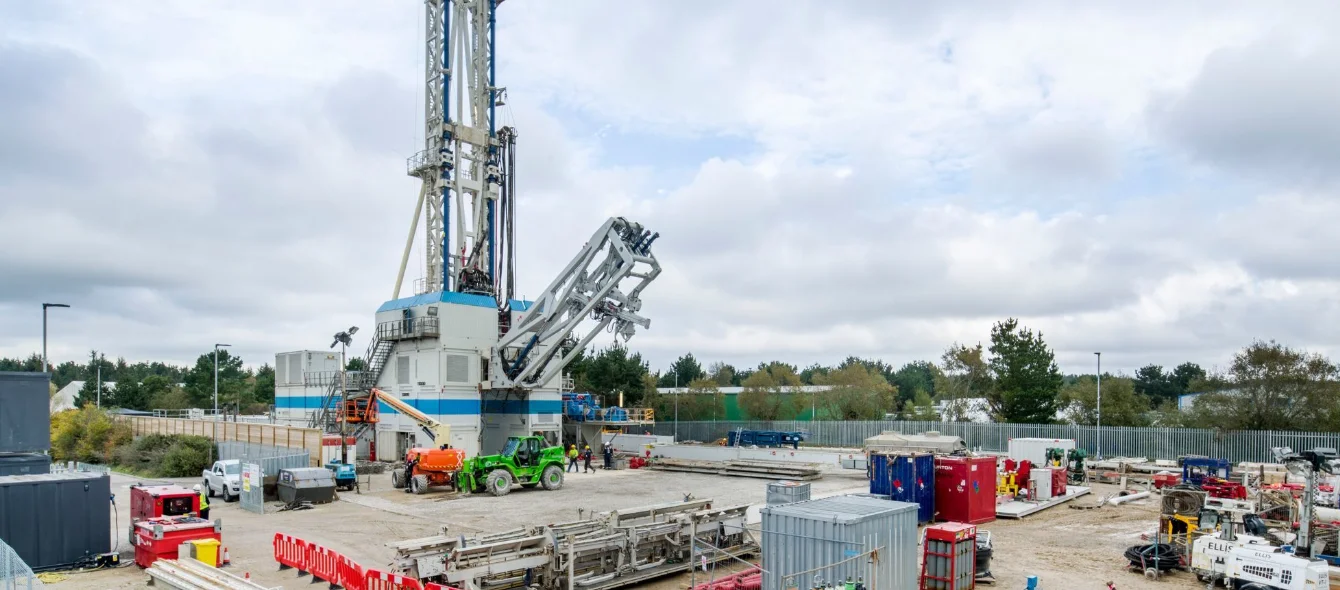Power generation from the UK’s first deep geothermal development, the United Downs Deep Geothermal Power Project, is expected by its developers in Spring 2022, following a second round of successful well tests last year. The project will, for the first time, allow electricity generated from geothermal energy to be sold into the UK electricity market.
UK company Ecotricity in January signed a ten-year power purchase agreement with Geothermal Engineers Ltd for a minimum of 3 MW of the plant’s electricity generation. United Downs will have capacity of 10 megawatts electrical (MWe) and 55 megawatts thermal (MWth).
Primordial power
Deep geothermal power harvests primordial heat generated when the planet was formed and heat generated in the earth’s crust from the decay of mildly radioactive elements. The extent of these resources close to the planet’s surface varies geographically and is most intense in volcanic regions, but even in the non-volcanic UK, the ground gets hotter the deeper you go. According to the British Geological Society, the temperature at 1,000 metres depth on average is 39°C, rising to 89°C at 3,000 metres and 139°C at 5,000 metres.
However, there are literal hot spots, for example in Redruth, Cornwall, where the United Downs Project is being developed. Radiogenic granites have created increased heat flows and temperatures above 160°C at 5,000 metres, sufficient to allow power generation from binary-cycle power plants. More of these ‘medium-enthalpy’ geothermal sites exist in the north of England and Scotland.
Deepest geothermal well to date
At Redruth two wells were completed in 2019. Water will be pumped down the 2,393 metre deep injection well, heated by the earth as it flows through natural fractures, and then recovered from the 5,275 metre production well in a continuous cycle, providing predictable and constant energy.
The United Downs production well is the deepest geothermal well in the world. As it reaches the surface, the hot geothermal brine is passed through a heat exchanger which heats a secondary fluid which expands to drive a turbine, creating both geothermal and binary circuits. The ‘steam’ from the secondary fluid is condensed and re-used. Geothermal energy brings three key advantages – round-the-clock operation, in contrast to solar and wind’s variability, sustainable heat and power, and a potentially wide geographical distribution of the resource.
Hot crust
According to a study concluded in 2017, Assessment of the resource base for engineered geothermal systems in Great Britain, an accurate estimate of the potential for deep geothermal energy is difficult because of the lack of precise data regarding the temperatures of basement rock at different depths. However, the study estimates that at about 5 km depth, areas with temperatures around 200°C have a technical power potential of 2,280 MWe. At 6.5 km depth, the technical power potential rises exponentially to 222,393 MWe.
Moreover, the resource lower down reaches far beyond the current known hot spots. According to the study, at 7 km depth, 98% of the UK’s crust yields temperatures of 150°C or more. Deeper drilling raises costs and drilling is the largest cost component of an engineered geothermal system. Further recovery of deep geothermal energy therefore depends on improvements in geothermal drilling technology to allow deeper wells to be drilled economically.
Sustainable rum
Cornwall is well known for its piratical past, so it is no surprise perhaps that some of the geothermal energy from United Downs looks set to be used to make rum. The Cornish Geothermal Distillery Company has submitted outline planning permission for a rum cask maturation facility and visitor centre within a huge biodome, similar to Cornwall’s Eden Project, which would be powered by heat and electricity from United Downs.
The project on January 8 announced that it had won £75,000 in state funding, one of the highest awards made for 17 low carbon distillery projects across Scotland and England as part of the government’s Green Distillery Competition.
Geothermal worldwide
The International Renewable Energy Agency (IRENA) puts worldwide geothermal capacity at 13,931 MW in 2019, up from 9,992 MW in 2010. It estimates the cost of geothermal power from 2007 to 2019 at between $40/MWh for the addition of capacity at existing sites up to $170/MWh for greenfield sites in remote areas.
Geothermal power capacity by region (2019, in MW)
Source: IRENAThe United States has the most installed geothermal power capacity (2,555 MW), followed by Indonesia (2,131 MW), while Iceland, with 753 MW, has the largest share of geothermal energy as a proportion of its overall energy mix. In Europe, Italy, with 800 MW, is the only EU country with capacity above 50 MW, but according to the European Geothermal Market Report 2019, published in June 2020, there were 36 projects under development last year and 124 in the planning phase across Europe, including Turkey.
In addition, at the end of 2019, there was 5.5 GWth of geothermal capacity in operation. The report forecasts that for electricity generation the number of operating plants could double in the next five to eight years with many more European countries exploring the technology’s potential.
